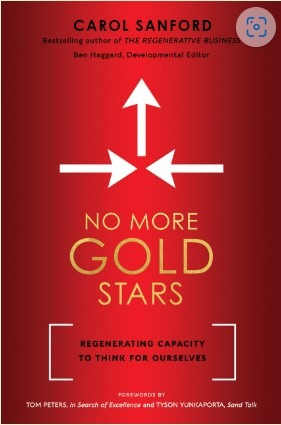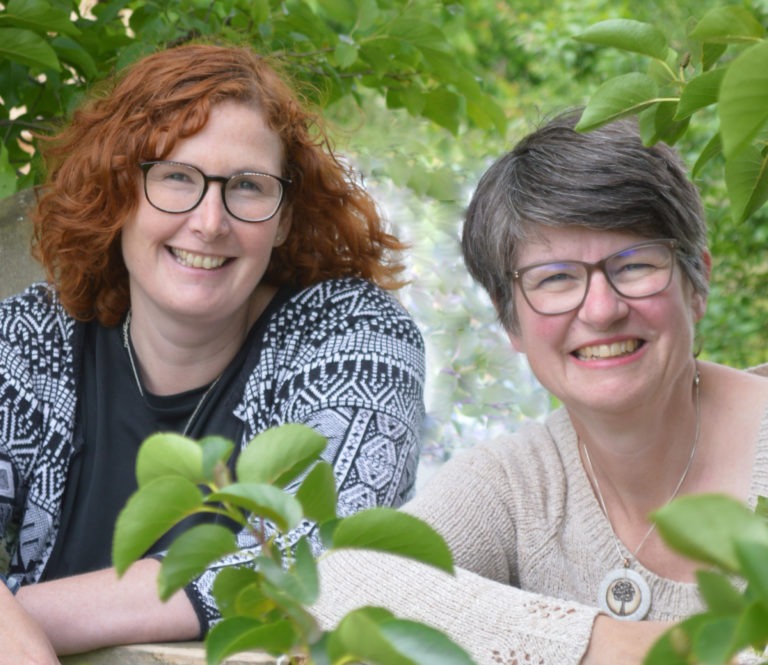
Rooted Leadership talk at Disrupt HR
Want to hear regenerative leadership explained in 5 minutes? Here’s a video of me speaking at Disrupt HR event in Nottingham. If you’d like to
My book Think like a Tree: the natural principles guide to life celebrates its 4th birthday this week.
I want to reflect on my motivations for writing the book, what has changed in the 4 years since it was published, and why it remains relevant today.
Think like a Tree was written in late 2018 at that time the consequences of rising temperatures had already been known for decades, but media and government were doing very little to highlight the problems, let alone set about changing them. There had been some hope in the Paris Climate Agreement of December 2015 but the prevailing mood was still one of denial or ignoring the problems.
One motivating factor for me in writing the book had been the 2018 IPCC Special Report stating that we only had 12 years to act to keep warming below 1.5 degrees. I had been working on personal, local and community climate solutions for 8 years, with Melbourne Area Transition and Whistlewood Common (both community responses to climate and ecological crises). I had also taught Forest School and Eco schools, including creating a Food Forest for the local primary school. And we’d already transformed our smallholding with tree-planting, forest gardens and permaculture design.
But I felt a personal urgency to reach a wider audience, with the ways of living that, I believe, will ultimately lead us to a different, more balanced, way of living on planet Earth.
4 years on we are still in a dire situation – we are shortly to hit the 1.5 degrees target despite politicians and the UN trying to keep the goal alive.
Extreme weather events around the world are increasing in frequency and severity. From devastating wildfires in Australia and California to record-breaking heatwaves in Europe and Asia, the impacts of climate change have become impossible to ignore.
But in many ways there have been significant changes.
One factor contributing to the change is the increased activism of young people around the world, particularly through the Fridays for Future movement. Young climate activists like Greta Thunberg have been able to capture the attention of the media and inspire a generation of young people to take action on climate change.
The direct action tactics of Extinction Rebellion, Just Stop Oil and Insulate Britain have been less easy for governments and the right wing press to ignore than previous protests.
In the mainstream news there are now many fewer platforms for climate denial, like there were back in 2018.
And awareness in the general population has increased, with 75% of UK adults saying they are worried about climate change (ONS October 2021), many expressing concern for future generations
Generation of renewable electricity in the UK has increased to 43% in 2020 and coal decreased to just 2%.
Movements like veganism for climate reasons, and no-flying (and flight shaming) have gained ground.
Where nature is concerned there is good and bad news also. The 2019 State of Nature (UK) report made for distressing reading with 41% of species having declined and 15% of species threatened with extinction.
Worldwide WWF’s Living Planet report in 2020 made for even worse reading, showing a 68% decline in birds, amphibians, mammals, fish and reptiles since 1970. I remember crying when reading the headlines, touched by the fact that I was born in 1971, so this represented devastation in my own lifetime.
But at the same time there has been a huge surge in interest in tree-planting and rewidling, with, for example beavers being released into the wild just a few miles from me in south Derbyshire; and projects such as Knepp rewildling in Sussex having achieved huge acclaim.
As a keen gardener (and TV gardening programme addict) I’ve seen a shift from manicured plots to wildlife and organic, peat-free approaches (a ban on peat use for domestic gardeners comes in next year, far too late – I’ve never once bought peat compost in the 20 years we’ve been at St Brides).
Regenerative solutions in agriculture, leadership, business and communities are still not mainstream, but there has been significant progress, and many in business are now actively seeking different ways of working, knowing that we cannot continue as we are.
But we still have huge problems, and it can be difficult to keep the momentum and avoid burnout.
So I wanted to share what has kept me going over the years.
The natural principles themselves.
I first learned formally about natural principles during my permaculture design certificate course and then deepened that learning in my Diploma in Applied Permaculture Design. However, many of the principles form a way of living that is so intuitive and natural, that I’ve always found it simple to turn to them for guidance whatever circumstance I find myself in.
In the last four years I’ve grown a business, created a network of facilitators, grown our offerings for regenerative organisations alongside a smallholding, a family and a chronic illness.
Some of my go-to principles have been: ‘take time to pause’ ‘be a good ancestor’ ‘use your energy where you can have the most effect’, ‘use your edge’, ‘cultivate co-operative relationships’, ‘value your uniqueness’ and ‘slow and small solutions’.
Some I use when designing new programmes and some are day-to-day guides, especially when times are hard.
The principles are universal, easy to understand and apply, and talk to the part of us that is already deeply connected with nature (even if our conscious minds have forgotten). And that’s why I believe Think like a Tree: the natural principles guide to life remains as relevant now as when it was published 4 years ago.
You will use the principles differently from me, because you are unique, but they apply to all of us, whatever our circumstances.
So let’s backtrack a minute – What are natural principles?
Essentially they are nature’s wisdom, evolved over 3.8 billion years of evolution. They are a ‘guide-book’ hidden in plain sight in the trees and forests around us.
Here’s what I wrote in the book:
“There are patterns common to all living things. These have been developed into a set of principles. I’ve gathered some from permaculture, some from biomimicry, and others I have simply observed myself in nature, when walking in forests, woodlands, gardens, moors, seashores, mountains and grasslands. These patterns and principles are all around us, hiding in plain sight.
Some of the principles overlap and some contain paradoxes. They are not definitive. This book is about my own interpretation of them – I make suggestions and I hope you will take from them what you need. I encourage you to discover your own interpretations and your own principles while reading the book and during your wanderings outdoors.
Many of the principles can also be found in old proverbs and ancient wisdom – for example, “slow and steady wins the race ”, “make hay when the sun shines ”, “your efforts will bear fruit ”. These principles are not mere analogies, they are evolutionary success stories, tried and tested over hundreds of millions of years.”
Indigenous peoples have followed similar principles, allowing them to live in ways that don’t harm themselves, their ancestors, or the Earth.
Together they form a philosophy for life, that is the antithesis to the modern machine mindset that compromises the health of the world and its people.
Since its release I’ve been contacted out of the blue by many readers, often sharing similar comments, the most common themes of which are: “now everything makes sense”, and “I now realise why I feel out of step with the world” and “I didn’t realise there were other people out there feeling the same way as me”.
There is a familiarity in them and they are welcomed in because they allow us to remove many of the feelings and thoughts that paralyse us and prevent us moving forward towards our purpose – like self-judgement, guilt, overwhelm and fear.
They are empowering, inspiring, motivating, balancing and nurturing if we know how to access them.
They offer an answer to that big question – ‘aren’t we going to have to give up so much if we want to live long-term on planet earth?’ – the answer is yes and no. The principles show us that what we gain is so much more than what we have to give up.
I have become even more convinced that the most essential change needed is a mindset shift en masse away from mechanistic-thinking (and even ‘sustainability’- thinking) into regenerative, nature-inspired approaches. It’s a big ask when so many people in power, the mega-rich, the media and many businesses profit from keeping customers and voters in the scarcity mindset that is now the norm.
Since writing the book I’ve dug deep into the work of many such as Jeremy Lent, Fritof Capra, Giles Hutchins and Laura Storm and completed courses with nRhythm, Gaia education, Jeremy Lent, Paul Pivcevic, and collaborated on my own courses with talented facilitators such as Sam Woods, JK McQuinn and Milly Carmichael. All this to add to the extensive studies and reading from Permaculture, Daniel Wahl, Looby Macnamara, Joanna Macy and hundreds more (as you’ll see from Think like a Tree’s extensive references).
The glorious alternatives to how we think and live now are cultivating an abundance mindset and a mindset of reciprocity – to make decisions for the good of the whole. That brings fulfilment for ourselves and calls into being the kind of society we all want to see – one where everyone has enough, there is no poverty, people are connected and supported, and no-one is exploited (or exploiting). Because the greatest advances in the evolution of living species have been where co-operation has occurred.
This mindset requires us to be good ancestors, thinking for future generations, and to be guided by living systems in our daily lives.
It remains more urgent than ever to think that if it works for nature, then it’s good enough for all of us to create a thriving and abundant future.
I urge you to check out the nature-inspired regenerative approaches and build on them – you’ll find them in permaculture, biomimicry, regenerative leadership, regenerative business, regenerative cultures, nature-inspired architecture and much more…
And if you would like a ‘manual for the modern world’ to guide you on your journey, then head to the Think like a Tree website where you can read the introduction of Think like a Tree: the natural principles guide to life by Sarah Spencer FOR FREE (for a limited time).
or
You can purchase a copy in paperback, ebook or audiobook:
UK paperback – signed copy direct from the author
Ebook and paperback worldwide via Amazon
Ebook also available on all major ebook platforms
Audiobook via Amazon UK
Audiobook via Amazon USA
Audiobook also available on Apple itunes

Want to hear regenerative leadership explained in 5 minutes? Here’s a video of me speaking at Disrupt HR event in Nottingham. If you’d like to

In “No More Gold Stars,” Carol Sanford challenges conventional notions of achievement and success. Carol is a renowned business consultant and educator and what struck

This week has felt a little bit epic! I have found myself taking deep, exhaling breaths as I sit with the medley of feelings I have